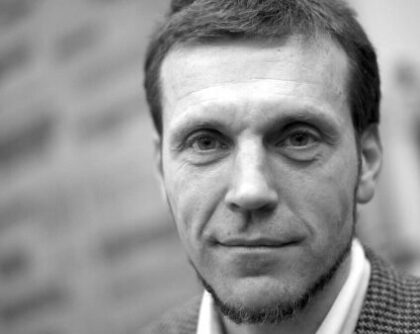Christoph M. E. Paus
Research Interests
Since its inception about 100 years ago particle physics has made amazing progress in understanding what matter is and what forces act on it. Nevertheless, there are a number of fundamental and seemingly simple questions we do not yet know the answer to.
Until recently my research focused on one of those fundamental question which is how elementary particles acquire their mass. We know very well that those particles have masses, but had not yet been able to show experimentally through which mechanism it happens. It was a giant leap and a major triumph for particle physics to find the Higgs boson the particle predicted to exist and give masses to all other particles. My group has been deeply involved in this huge enterprise and during the main preparation and during the discovery I was leading the entire CMS team (about 500 people) in its search for the Higgs boson. The precise study of its properties is the top priority for the energy frontier research and is one of my main objectives right now.
With the Higgs found a new fundamental questions has started to inspire me in my research. From astrophysical data it is well known that ordinary visible matter in the universe accounts for only one 5th of the total matter. This means four fifth are not visible to us and are therefore referred to as dark matter. I am searching for dark matter with the CMS experiment. Dark matter is expected to leave missing energy signatures in our detector as it escapes the collision without being caught by our detector.
Keywords: Dark Matter, Higgs boson properties, Physics beyond the Standard Model
Biographical Sketch
Education
1985–87 Soldier at the German Bundeswehr
1987 Interrogation Officer in Polish language
Rheinisch Westfälische Technische Hochschule, Aachen (1987–96)
1989 Pre-Diploma Mechanical Engineering
1990 Pre-Diploma Physics
1990 Pre-Diploma Mathematics
1992 Diploma Mechanical Engineer
1996 Ph.D. Physics
European Laboratory for Particle Physics, CERN
1997 CERN fellow
Massachusetts Institute of Technology
1999 Assistant Professor of Physics
2004 Associate Professor of Physics
2006 Associate Professor of Physics (with tenure)
2010 Professor of Physics
Research Positions
2019 Co-Chair, Symposium on the Quark Discovery – 50 Years
2013-now Co-Leader of the Computing Operations Project at CMS
2013 Co-organizer, Aspen Physics Conference ’Quo Vadis Higgs’
2011-12 Co-Convener of Higgs Physics Analysis Group at CMS
2010 Co-organizer, Berkeley-MIT Workshop ’Implications of Early LHC Data’
2007-2009 Co-Leader of the Data Operations Project at CMS
2005-now Principle Investigator of the CMS Tier-2 Computing Center at MIT
2003-2004 Co-Convener of B-Physics Group at CDF
2000–2002 Co-Convener of the B Reconstruction and Tagging Group at CDF
1999–2005 Co-Leader of the Time-of-Flight Project at CDF
1998–2006 Co-Leader of the Level3 PC Farm Project at CDF
1994–2001 Member of the LEP Electroweak Working Group
1999–2000 Co-Convener of the Mixing and Lifetime Working Group at CDF
1997–1998 Co-Convener of the LEP Fermion Pair Working Group
1996–1998 Member of the Scientific Publication Committee of the L3 Experiment
1996–1998 Co-Convener of the Fermion Pair Production Analysis Group at L3 Experiment
More info:
- 3 Questions: Physicist Christoph Paus discusses newly discovered particle [MIT News Office, ]
Awards & Honors
- 2018 // Buechner Special Teaching Award (MIT) "for the efforts put forth to develop the Experimental Techniques course" (co-recipient Prof. Richard Milner)
- 2017 // J-WEL grant in Higher Education Innovation: "Fundamentals of Experimentation in the Physics Sciences using an Arduino"
- 2011 // American Physical Society Fellow "For his many contributions to the success of the CDF experiment including his leadership and creative analysis approach in the observation of B_s mixing and measurement of delta_M_s along with his hardware leadership of the of our level-3 trigger and Time-of-flight system."
- 2007 // Buechner Teaching Award (MIT) "for developing a pioneering videoconferencing subject linking CERN (European Organization of Nuclear Research) and MIT based on LHC (large hadron collider) physics."
- 1999 // Research Award from NEC Corporation Fund for Research in Computers and Communications
- 1996 // Borchers Medal awarded for PhD thesis
Key Publications
-
\bibitem{Khachatryan:2014rra} V.~Khachatryan \textit{et al.} [CMS], %“Search for dark matter, extra dimensions, and unparticles in monojet events in proton–proton collisions at $\sqrt{s} = 8$ TeV,” Eur. Phys. J. C \textbf{75}, no.5, 235 (2015) doi:10.1140/epjc/s10052-015-3451-4 [arXiv:1408.3583 [hep-ex]]
-
\bibitem{Chatrchyan:2012ufa} S.~Chatrchyan \textit{et al.} [CMS], %“Observation of a New Boson at a Mass of 125 GeV with the CMS Experiment at the LHC,” Phys. Lett. B \textbf{716}, 30-61 (2012) doi:10.1016/j.physletb.2012.08.021 [arXiv:1207.7235 [hep-ex]]
-
\bibitem{Acosta:2003zx} D.~Acosta \textit{et al.} [CDF], %“Observation of the narrow state $X(3872) \to J/\psi \pi^+ \pi^-$ in $\bar{p}p$ collisions at $\sqrt{s} = 1.96$ TeV,” Phys. Rev. Lett. \textbf{93}, 072001 (2004) doi:10.1103/PhysRevLett.93.072001 [arXiv:hep-ex/0312021 [hep-ex]]
